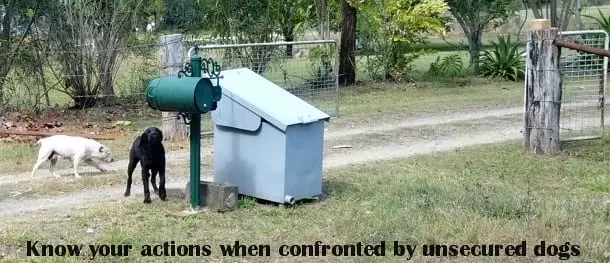Introduction
When running we should always have a plan in mind of how to escape an unexpected, potentially life threatening situation and evasive action means taking an immediate measure (like diving to avoid a collision with another vehicle or person) to evade the possible consequences of an incident.
This article explains how to turn this split second decision making process into a more considered risk management approach to be used for all joggers no matter what level, age, or exercise environment. We break down “subconscious evasive action” and turn it into a 3 step procedure to make it easier to understand and to learn how this simple procedure (essentially a mini risk assessment) can be applied to potentially save your life when you’re out on your next run.

Just like when we’re driving a car and constantly driving for the unexpected maniac on the road, we can employ similar practices when we jog. In a car we have an outer shell, airbags and other safety mechanisms to help limit injury if we are involved in an unfortunate accident, however, as a jogger we don’t get these luxuries to help protect us.
Therefore, we must be vigilant when we are out running, especially when we’re getting fatigued, because one lapse in concentration can mean serious injury or death.
Evasive action is an instinctive reaction; however, the steps leading to the kind of evasive action we take can be planned so our instinctive reaction to a threat becomes well-honed and more likely to save us from harm. Therefore, evasive action is not something people are born with, rather, it is a skill which is learnt, practiced, and constantly used.
When we are running (no matter where it is) we need to be acutely aware of our surroundings, we need to understand what are the potential risks and threats in our running environment, and we need to know what our actions will be if confronted by any of these potential risks or threats.
The evasive action procedure
And, there is a procedure we can follow to help us identify risks, threats, and planned actions  to combat them if they arise, to mitigate the chances of being injured or killed whilst running. This procedure is called the evasive action procedure and it’s similar to what good vehicle drivers use to limit their chances of being involved in a vehicle accident. The evasive action procedure is made up of three steps in order: 1 – evaluating the threat; 2 – preparation for evasive action; and 3 – evasive action.
to combat them if they arise, to mitigate the chances of being injured or killed whilst running. This procedure is called the evasive action procedure and it’s similar to what good vehicle drivers use to limit their chances of being involved in a vehicle accident. The evasive action procedure is made up of three steps in order: 1 – evaluating the threat; 2 – preparation for evasive action; and 3 – evasive action.
 to combat them if they arise, to mitigate the chances of being injured or killed whilst running. This procedure is called the evasive action procedure and it’s similar to what good vehicle drivers use to limit their chances of being involved in a vehicle accident. The evasive action procedure is made up of three steps in order: 1 – evaluating the threat; 2 – preparation for evasive action; and 3 – evasive action.
to combat them if they arise, to mitigate the chances of being injured or killed whilst running. This procedure is called the evasive action procedure and it’s similar to what good vehicle drivers use to limit their chances of being involved in a vehicle accident. The evasive action procedure is made up of three steps in order: 1 – evaluating the threat; 2 – preparation for evasive action; and 3 – evasive action. Once we understand how to use the evasive action procedure we can then apply this to our own unique situation wherever we may be or whatever exercise we are doing. Let’s start by going through the three main steps to the evasive action procedure.
Step 1 – Evaluating the threat
So using the car example again, as we drive we scan the road ahead and look for potential threats – it might be that vehicle stopped at an intersection we are approaching. Will that vehicle stay stopped at the intersection and give way to us or will it pull-out in front of us or even sideswipe us as we go past? We as drivers of everyday vehicles within our communities ask ourselves these type of questions constantly as we drive and this is called evaluating the threat.
Step 2 – Preparation for evasive action
Still on the same car example, once we evaluate the threat, we then go into preparation for evasive action by deciding what action/s (both passive and active evasive actions) we will take if any of the possible threats from our quick evaluation of the threat come true. In other words, if that vehicle does indeed pull out in front of us or attempt to sideswipe us as we go past what will our action/s be?
For example, one action may be to brake heavily (active evasive action), in the case of that vehicle pulling out in front of us; if so, is there anyone travelling close behind us and could our sudden braking cause them to rear-end us? So, in the end we may decide to slow down (passive evasive action) and proceed with caution giving us and the vehicle behind a chance to avoid collision if the threat materialises. The consideration of the options open to us to avoid a possible threat if it arises is called preparation for evasive action.
Step 3 – Evasive action
Both the acts of slowing down (passive action) and if required stopping (active action) if that vehicle did pull-out in front of us are called evasive action. Therefore, the evaluation of the threat we undertook has come true and the preparation for evasive action we mapped out, just in case, is able to be acted out, or evasive action taken in a more controlled and skilful way because we weren’t surprised. And, if the threat doesn’t materialise and that vehicle continues to do the right thing and give way, then the evasive action procedure is complete and is reapplied for the next potential threat.
And so it goes on with drivers utilising the evasive action procedure hundreds of times a day and sometimes many times every few seconds.
Applying the evasive action procedure to running
Now let’s get back to applying the evasive action procedure to running/jogging. Just like driving a vehicle we need to learn how to quickly identify what our potential threats are when on a jog and we need to know what kind of evasive action we should take under certain circumstances.
It isn’t practicable to know every possible threat that faces all joggers around the world, but we can group together some of the most common to show some good examples so people can apply the same logic to their own run circuits.
The following part of this article itemises some common running threats, concerns, and evasive actions where the evasive action procedure can be applied.

Always road run against the traffic direction so you can see the vehicle approaching and take action if it is going to hit you. In Australia, vehicles travel on the left and the jogger (above image) is running with his back to the traffic, which is a dangerous practice.
Vehicles and roadways
* This segment includes, road running and gives some examples on how the evasive action procedure can be applied.
I have had to take evasive action when jogging with respect to vehicles many times. I’ve needed to dive, jump, run, and yell to avoid being hit. Once, I actually did get hit by a car but I was bike riding at the time and although not technically relevant it is a funny story. I was riding with a friend past a “T” intersection on a main road, so I had right of way, when out came this car and side swiped me knocking me clean off my push bike. The car stopped immediately and my friend seeing “yours truly” sprawled out over the road proceeded to roar profanities at the driver, my friend’s colourful use of swear words would have made the devil himself blush.
As the driver got out of the car we both instantly noticed the familiar attire, which gave the man’s occupation away – I had been “run-over” by a priest!
Anyway, I was ok apart from some scrapes and bruises but my bike was stuffed and the priest offered to pay for the repairs (and pay he did) so I was happy enough in the end but it could have been much worse. So ends the reading…
Running on a road or close to the edge of a road
Let’s apply the evasive action procedure and the 3 steps…
Step 1 – Evaluate the threat. Obviously, the first threat to mind is a motorist swerving into us or driving straight at us and being hit by the vehicle. For example purposes, we could let’s just leave it at that, but let's add another threat – a sudden dog attack/chase from a property along the roadside.
Step 2 – Preparation for evasive action. Firstly, let’s look at some passive evasive actions we can take:
· Always run into oncoming traffic. This passive action should almost always be possible to do. A runner jogging along a road should run so they can see traffic coming towards them so if the vehicle veers into their path the runner can take active evasive action (like diving out of the way). I cringe when I see walkers and runners with their backs to the traffic on the same side of the road because they have no way of knowing what the approaching vehicle is doing. Never trust a motorist!
· Awareness. Running on a roadway is dangerous (they are meant for vehicles not people); therefore, as a jogger we need to know when each and every vehicle is approaching so our main focus must be to read the road ahead and behind (especially on a single carriageway). We have to use both our sight and hearing to identify approaching vehicles early in order to give us time to react. Dog attack – Look for possible dog problem areas and take mental note of properties with vicious dogs. Scan dog properties along the way for unsecured animals like open gates etc.
· Road position. When correctly running into oncoming traffic a jogger should try and run as close to the edge of the road as possible to avoid being hit, or, run on the verge (if possible) until the vehicle has gone past.
· Escape route. Avoid any thoroughfare, which has no escape route, for example, a roadway with a concrete barrier with little or no verge. If road running is required, try to always run on roads which offer an option to get out of the way if something happens. Dog attack – Never run across a road to escape a dog this type of spontaneous decision when surprised by a dog could get you killed.

The image above shows an easy example of two possible routes to take when approaching the bridge. The roadway is marked as "NO" because the escape route is minimal and blocked by a barrier. The pathway in this case is a safer option.
· Clothing. Runners should wear easy to see attire especially when jogging in poor light.
· Timing. Runners should avoid road running in poor lighting conditions (like night time). If running in poor light conditions is necessary, than lighting like a headlamp and fluorescent clothing should be used.
Now to prepare for some active evasive actions we can take. The important point to note with the following examples of active actions is the person should always be scanning the roadside ahead for possible escape routes to either safely move or dive away from the threat:
· Move out of the way. If the runner can see a vehicle is heading straight for them they should move off the side of the road and away from the line of the oncoming vehicle. This can be done by moving off the road completely via any pre-identified escape path.
· Dive out of the way. If very little warning is given and a vehicle swerves into the path of the runner then the person needs to be prepared to dive out of the way to a predetermined area and accept possible minor injuries in order to save life.
· Dog attack – hold ground and slowly jog or walk away. Keep eye contact with the animal, yell loudly at the dog (I usually yell, "get home ya bloody mongrel!!!) and slowly move off maintaining your road position and checking back at the dog until the threat is over. A dog attack can be a frightening and surprising experience, that's why we should have a pre-rehearsed course of action planned so we can deal with the threat as safely as possible.
Step 3 – Evasive action. So, we can see steps 1 and 2 (for the threats we know about) can mostly be undertaken prior to even starting a run and this step (step 3 – evasive action) is the “doing” part if required. Therefore, just like any risk assessment the primary reason they are done is to mitigate risk and discover what may happen before it does so it can be dealt with efficiently. There will always be threats discovered in real time and for those threats all steps for the evasive action procedure will be done on the run (pardon the pun).
The above evasive action procedure (or risk assessment for jogging on a roadway) is an example of how it can be constructed and applied. Of course, running on a roadway and the threats will differ from place to place but this is the basic way to construct the assessment and ultimately make the jog safer in the end.
Other threat examples
Indeed, one seemingly simple run circuit may have many different threats to contend with and if a person is serious about their safety on a jog then the evasive action procedure should be applied to every perceived threat.

Once, I got hit by a disabled man on a motorised scooter. He came driving out of a laneway and straight onto the path where I was running. Luckily, I was jogging slowly and I ended up in his lap – no damage done. However, motorised scooters for the disabled and elderly are now part of my evasive action procedure (especially near the retirement village I regularly run past).
Yes, not all threats are ever going to be known but care should be taken to identify as many as possible so actions can be fore planned and the circuit made safer.
Some other threat examples are:
· Pedestrians, other runners, or bike riders;
· Animals – snakes, dogs, birds, bears, big cats etc;
· Uneven ground, obstacles, or terrain hazards;
· Sudden illness/injury;
· Storms or bad weather;
· Prankster or stranger attack; and
· Parked vehicles and driveways; and
Conclusion
Running is a great way to exercise but it does come with an element of risk. Joggers around the world are needlessly injured and killed every day just by going for a simple run. Therefore, as runners we must implement our own individual risk management plan in order to mitigate risk and ensure our running circuit is as safe as we can possibly make it.
The evasive action procedu re made up of the three steps: evaluate the threat, preparation for evasive action, and evasive action, is a way runners can assess their run circuit and take necessary action if required to preserve life and limb.
re made up of the three steps: evaluate the threat, preparation for evasive action, and evasive action, is a way runners can assess their run circuit and take necessary action if required to preserve life and limb.
 re made up of the three steps: evaluate the threat, preparation for evasive action, and evasive action, is a way runners can assess their run circuit and take necessary action if required to preserve life and limb.
re made up of the three steps: evaluate the threat, preparation for evasive action, and evasive action, is a way runners can assess their run circuit and take necessary action if required to preserve life and limb. Staying fit and healthy is one thing; however, staying safe on our run is a priority worth spending a small amount of time preparing for.
Feel free to use the comment section below and have your say (no email is required).
Consider joining our forum? I have started a conversation about this article here so for more discussion on this subject or exercise, health, and well-being in general, just follow the link.
Thanks for reading and thanks for your support.
Respect your body and keep it healthy through regular exercise
Mark Valencia – Editor SSM












